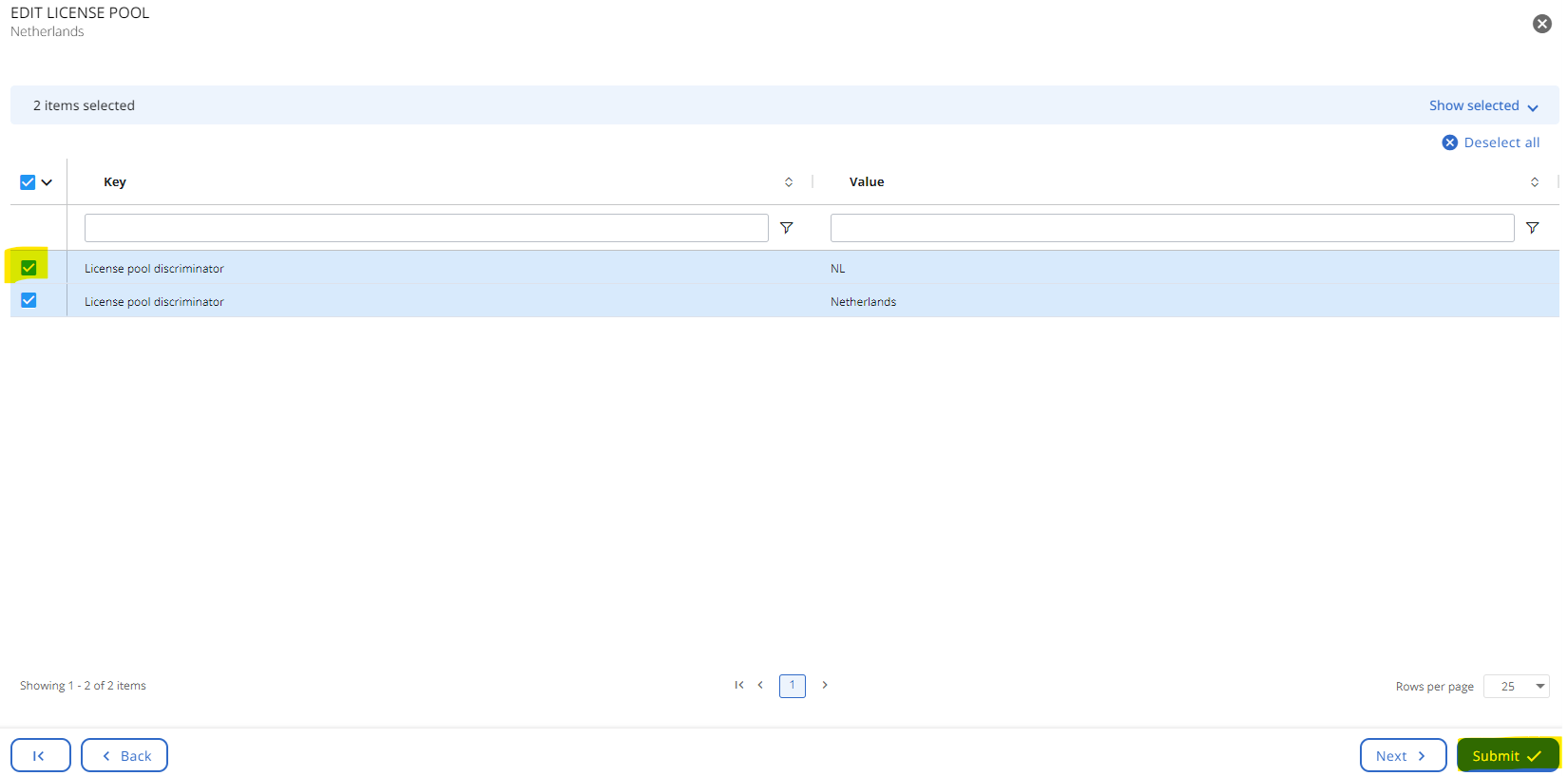License Pools are not available in the Essentials and Professional solutions, but they can be purchased as an add-on.
From time to time, an organization may find they have a need to merge two or more License Pools into one.
Merging License Pools is a very easy and straightforward process. First, as shown in the image below, you want to delete the License Pool that needs to be merged into another.
If you make a mistake and delete the wrong Pool, don't worry. You can easily recreate any License Pool you may have unintentionally deleted.
In the example below, the License Pool named “NL” will be merged with the License Pool named “Netherlands”.

Next, locate the License Pool that is the target of the merge and click on the Pool's name to enter edit mode.
Continuing with our example, you'll want to click on “Netherlands” as that is the License Pool into which the Pool named “NL” will be merged.

Once you are in edit mode for the target License Pool, you can then perform the merge.

To accomplish this, you will tick the License Pool that you previously “deleted” and then click “Submit”.


When merging License Pools, please keep the following in mind:
- Merged License Pools consist of the parent License Pool as well as any member Pools. In the example above, the parent License Pool is “Netherlands” and the member Pool is “NL”.
- License Pools, whether they have been merged or not, continue to rely on whatever “Filter criteria” were originally chosen to configure your License Pools.
- For reporting and license management purposes, the parent License Pool is the governing Pool. Member Pools are invisible. Therefore, all data associated with the member Pools will be reflected as part of the parent Pool.
- For customers who rely on License Pools in place of V-Tenants (e.g., EnableLpVTenants = Yes), merging License Pools may impact the scope of access for any given operator.
